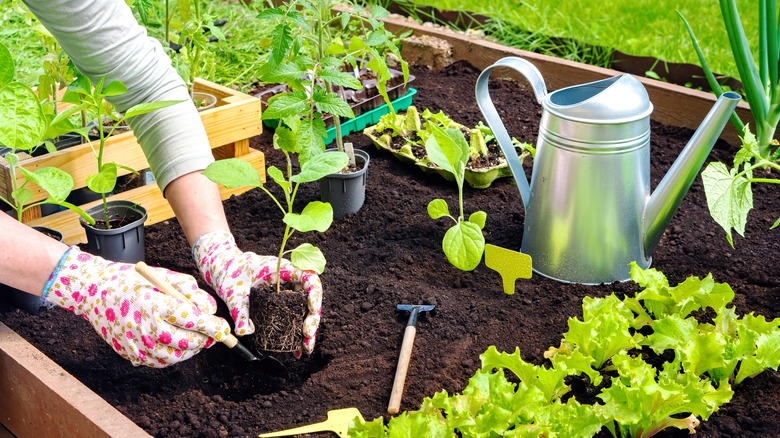DIY Raised Garden Beds With This Practically Free Hack
Raised bed gardening has seen a massive increase in popularity in recent years. Not only does it allow you to garden even if you have poor, or even contaminated, native soil, but it also allows for earlier harvests and far less fertilizing and weeding. The one downside of raised beds is the initial cost. Not only do you need to buy soil for the bed, but you usually need to buy either a raised bed kit or lumber or metal to construct the bed as well. There's no rule that raised beds need to be made out of wood or metal though, and cardboard boxes can actually make great raised beds for gardeners on a budget.
Raised beds are far from a new gardening method, but their recent explosion in popularity has propelled them into the mainstream and given many the impression that the only way to have a raised bed garden is to buy an expensive kit. Nothing could be further from the truth. At their core, raised garden beds are simply a way to grow healthy crops without having to worry about the backbreaking work of tilling and the frustrations of gardening in poor soil. There are a variety of cheap garden containers you likely have around your house. By using cardboard to create your raised bed, you'll not only be saving yourself money but you'll be reusing cardboard that might otherwise end up in a landfill or recycling center.
Constructing cardboard raised beds
It's common to line the bottom of no dig gardens with cardboard to prevent weeds from growing through, so if you have a box that's already the perfect size for a raised bed, there's no reason to cut out the bottom. You can use anything from a refrigerator box, to a smaller box of only 2 or 3 feet cubed. Because the cardboard is unlikely to survive for longer than a season or so, decide in advance if you plan to dump out your cardboard raised bed garden altogether when you're done, or keep it permanently and allow it to eventually become a sideless raised bed or hugelkultur mound.
Once your cardboard garden bed is situated, you'll need to fill it with growing medium. If you plan to keep your raised bed permanently, you may want to fill the bottom with leaves, logs, and other organic material. These will hold onto water and slowly break down. Then, fill your bed with soil. There are a variety of popular recipes for raised bed soil, ranging from The University of New Hampshire's recommendation of 70 percent topsoil and 30 percent compost, to the classic Mel's Mix of equal parts peat moss, vermiculite, and blended compost. Potting soil specifically formulated for raised beds is also available at most garden centers. At the end of the season, you can discard your small cardboard container gardens or allow larger ones to continue thriving and reap the benefits of hugelkultur gardening.
